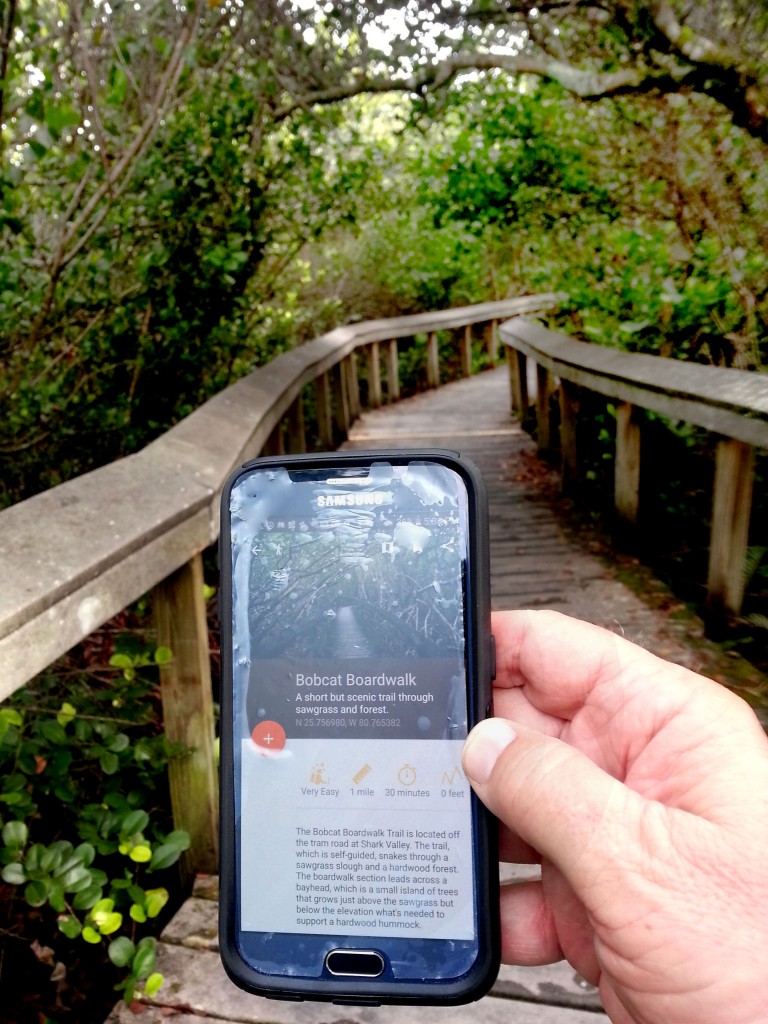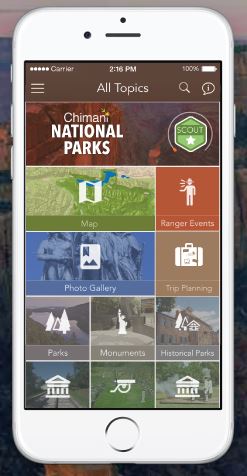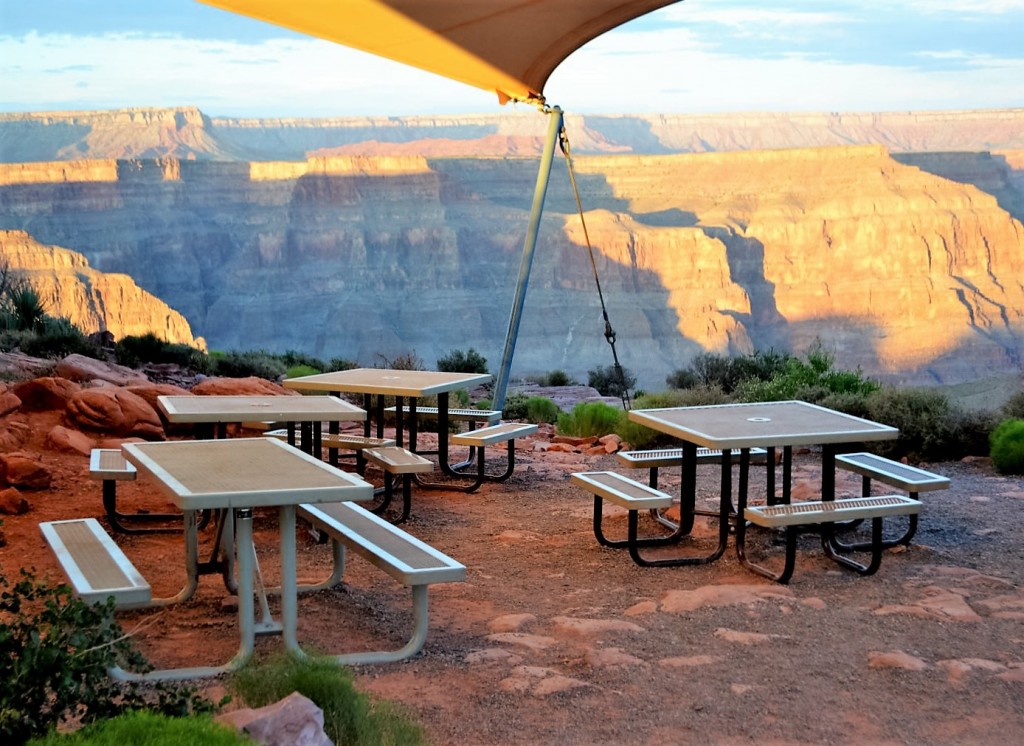 The Chimani park app is like having a guide in your phone for National Parks (Photo by Robert Caston
The Chimani park app is like having a guide in your phone for National Parks (Photo by Robert Caston
Will an iPad or an Oculus Rift headset replace a geyser at Yellowstone National Park? Some people are concerned it will. But one application has found a way to merge technology with visiting a park that could actually increase interest in the outdoors.
That company is called Chimani, and they offer this incredible park exploration technology for FREE.
The concept behind the app is simple - provide a huge database of resources and information for park visitors combined with GPS tracking technology. This way each user can customize those resources to where they are actually standing, whether at Yellowstone or Mammoth Cave or Mount Rushmore.
When they download the apps, they are treated to a digital backpack of amenities for each of the 59 National Parks in the US or a general app that covers the parks and 400-plus other locations in the National Park Service.
These apps include features such as:
- Points of Interest
- Maps
- Photo galleries
- Hiking trails
- Picnic areas including the presence or even the number of picnic tables and fireplaces
- Sunrise/sunset times
- Road closures
- Events
- "Where Am I?" locator
All it takes to grab this incredible array of information is to download Chimani from Google Play, Apple App Store or Amazon.
And it will literally change the way we interact with parks.
Chimani park app idea generated after rough encounter in wilderness
 Screen shot shows all the amenities offered by Chimani park ap
Screen shot shows all the amenities offered by Chimani park ap
According to Merriam-Webster Dictionary, a "chiman" is a shaman priest of the Mam Indians who uses prayers, soothsaying and divination to mediate between humans and the supernatural.
The concept for the Chimani park app was created out of necessity. One day, co-founder Kerry Gallivan was hiking in the mountains of Acadia National Park in Maine. A torrential downpour hit. He was out of reach from any cell service.
"He ended up getting pretty soaked," said Thomas Tash, marketing manager for Chimani.
An "aha" moment hit Gallivan, who at the time was the IT director for a local high school.
Why not create an app for park visitors so they could see where they are at any given time when hiking in a park? Allow them to also check the local weather and include a ton of relevant information about that park. And make it so they don't depend on cellphone or Wi-Fi reception which is always sketchy in remote areas.
In essence, provide your own personal park guide in a phone. Attached to a satellite.
The app was built and the idea caught on. Since Chimani launched a few years ago, the user base has now blossomed to 1.4 million park enthusiasts and hikers.
Google has even chosen Chimani as one of its exclusive partners for a new App First Indexing program which features more than 25,000 points of interest and events related to parks and the outdoors.
Tash said originally there was a small fee to use the app, but when the company decided to test offering it for free, the number of users just blew up. Now the company supports itself with sponsors and advertisements.
One of their big sponsors is the automobile company Subaru of America. Subaru has been extremely active in supporting our national parks and is also involved in a Zero Landfill Initiative to reduce litter at parks and promote sustainability.
"It's been a really big year for us," said Tash. "Now Chimani is an essential tool like having a Swiss Army knife. We're seeing a lot more engagement and activity."
Tash says Chimani works closely with many parks to gather information and input from park officials, many of whom are very excited about the technology.
"We send it to the park service to let us know anything they see to improve the app before it goes out," he said. "More and more parks are becoming interested in working with us. They see this app as another great way to promote the parks."
 The Chimani app uses GPS technoloy to show various park amenities including where to find a place to eat such as these picnic tables at the Grand Canyo
The Chimani app uses GPS technoloy to show various park amenities including where to find a place to eat such as these picnic tables at the Grand Canyo
What's great about the Chimani park app is that everything is right there are your fingertips. You can find hiking trails, visitor's centers, points of attraction.
When checking their user analytics, Tash said they also noticed how people use the technology quite a bit to find simple necessities such as restrooms or water fountains.
"Plus, if you are a person who is naturally not good with directions, it's highly helpful," he noted.
The developers also include a list of organizations that are involved with each park, to help raise awareness of the people behind the scenes that work to preserve these precious natural wonders and to give people an opportunity to get involved in their favorite park locations.
At the same time that Pokemon Go is gaining popularity, Chimani is using digital games and challenges, for example, tracking the number of miles people cover in the Acadia National Park 100-Mile Challenge.
Currently, people can also earns badges and points for each park they visit.
This year is the 100th anniversary of our precious National Parks Service. But park officials are concerned about the future. Right now, there are record numbers of people visiting our national parks. However, most of them are boomers or retired seniors.
But when it comes to Millenials, the next giant demographic bubble, will they spend their time chasing dinosaurs in a virtual reality park instead of looking for a moose in a real park?
Chimani is one solution. When people use the app and see all the vibrant photos and the incredibly diverse landscapes that our parks offer, it might be just the catalyst they need to move from playing video games on a couch to trekking over a stream or up a mountain.
"We believe Chimani inspires them to get out and take their own photos and videos," said Tash. "It creates interest in these parks in a different way."
As we celebrate our incredible national parks this year, this is certainly one instance where technology is not a diversion from our parks, but a great way to get people to appreciate them even more.


